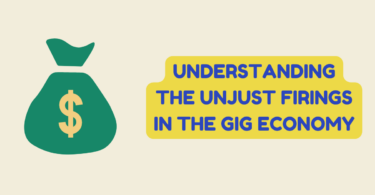
Why Flutter Is a Good Choice for Creating Cross-Platform Mobile Apps
Using cross-platform technology may help you turn your app concept into a functional mobile app fast and at a reduced cost, however, you’ll need to do some research before settling on a framework. Flutter and React Native are two of the most popular cross-platform mobile app development technologies available today. But the objective is to use the greatest framework to create a fantastic commercial mobile app for a client. Let’s pick up Flutter since it’s adaptable.
What is Flutter?
Due to its cross-platform nature and the ability to use a single codebase to produce cross-platform applications with a native look and feel in a very short amount of time, Flutter has attracted a lot of interest in the app development market. As one of the most widely used technologies today, it has gained widespread acceptance.
Flutter is an open-source UI SDK (software development kit) that can be used to create apps for mobile, web, and desktop platforms that look and perform like they were built for them. It was built by Google on top of the Dart programming language and is utilized by programmers and businesses all around the globe.
What is Cross-Platform?
A cross-platform system is a product or system that is compatible with different platforms or operating systems. It consists of both hardware and software. It requires distinct builds for each platform. They function identically across all platforms.
We use the phrase cross-platform differently in numerous sectors of the information technology industry. A standard cross-platform system is a virtual product that operates in a wireless network or cloud computing environment. We also refer to it as cross-platform and platform-independent.
Cross-platform operations encompass not just application programming interface functionality but also compliance with any licensing requirements. Using open-source software and operating systems has reduced the number of software license agreements. They continued to provide the leading operating systems under traditional licensing.
Why Flutter is Suits for Cross-Platform Development
Since consumer preferences are shifting at a dizzying rate, company owners and appreneurs are always on the lookout for a simple method to create a mobile app. Many startups and small companies feel pressured to rush the release of their mobile applications in response to the fierce competition in the market.
To create mobile applications, more and more development firms are turning to Flutter since it meets all their criteria. We’ll examine a handful of the various ways in which Flutter excels above its competitors.
Simple to Master
Neither the required toolbox nor a genuine production-ready language can be learned overnight. Flutter, on the other hand, offers developers documentation that is not just simple and concise, but also packed with useful examples. You may save on expenses by using a single codebase for different OSes.
Flutter is written in the highly typed and object-oriented programming language Dart. It makes the design process easier, and it provides uniformity and standards, as well as functionality that may be lacking in certain preexisting cross-platform tools. Dart’s familiarity with languages like Java, C, and TypeScript makes it a natural choice for use in Flutter’s feature-rich app development environment.
Hot Reloading Option
The most helpful aspect of Flutter from a developer’s perspective is hot reloading. This function enables programmers to make modifications to the code while simultaneously monitoring its effects on hardware, simulators, and emulations.
If you make changes to your code while the app is running, you may see the results immediately without having to restart the program. The ability to update the cross-platform mobile app with bug fixes and new features is another plus.
Perfect for the MVP
Due to the high level of competition in the market, businesses and startups sometimes have only a limited amount of time to showcase their offerings to potential backers.
With Flutter, you can create native applications for both Android and iOS, giving potential backers a clearer picture of the product’s ultimate form.
Important UI Components
Are you still considering why Flutter is a good option for developing cross-platform applications? The explanation is straightforward: widgets are fundamental to Flutter, just as they are to other dynamic programming languages.
Developers of mobile apps may save time crafting user interface elements by using these widgets to get immediate results from their code. The Flutter architecture is most helpful to the developer since the fundamental UI components are clearly shown for each screen and resolution. In contrast, a user interface element has only to be made once for all screen sizes to automatically adjust accordingly.
The quality analyst will also benefit from this since they won’t have to waste time testing the flutter mobile app design on as many different devices. Even though Flutter has its own widget package, someone has rendered all the components natively, which improves efficiency and creates a more natural look and feel.
Effectiveness and Simplicity in Implementation
As a software development kit (SDK), Flutter is built on top of the Dart programming language. Because Dart is compiled into native code without the need for a bridge, it often provides better performance and smoother app transitions than other cross-platform options. Hot reloading is supported in Flutter by injecting newly-compiled source code files into the active Dart VM. In this way, developers may quickly see the effects of their work and test it without having to wait. Deployment is likewise well-defined, as Flutter offers both Continuous Integration and Continuous Deployment.
Conclusion
The industry of developing multiple platforms is thriving at the moment. Since Flutter has Google’s support, its documentation and development will continue to improve rapidly, making it one of the most popular frameworks. It’s simple to deploy because of its high performance, robust support community, plenty of out-of-the-box solutions, and well-structured code. Flutter-created apps are more budget-friendly than those built using native code on two different platforms.
For this reason, Flutter is the ideal solution for creating apps that work across several platforms.






